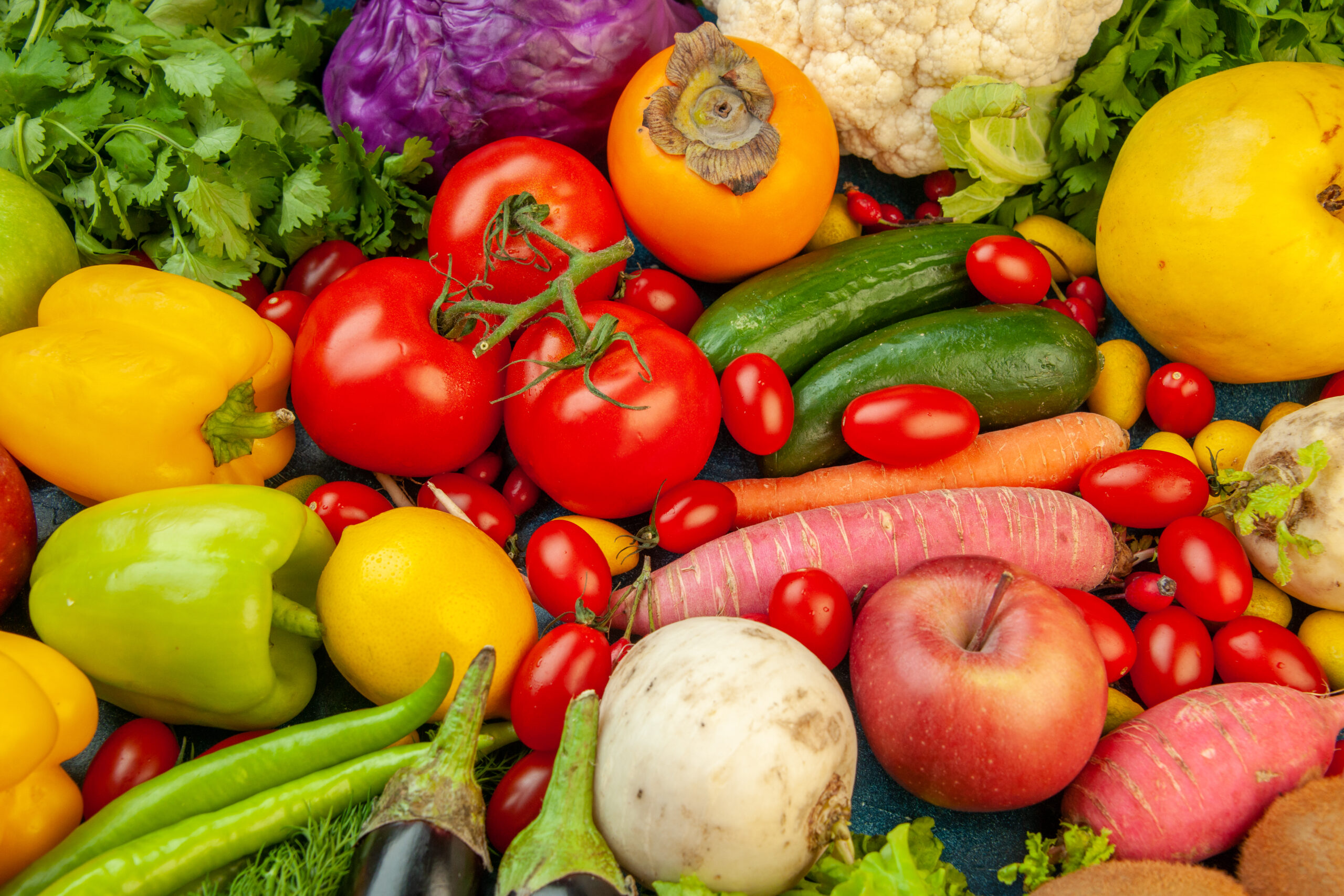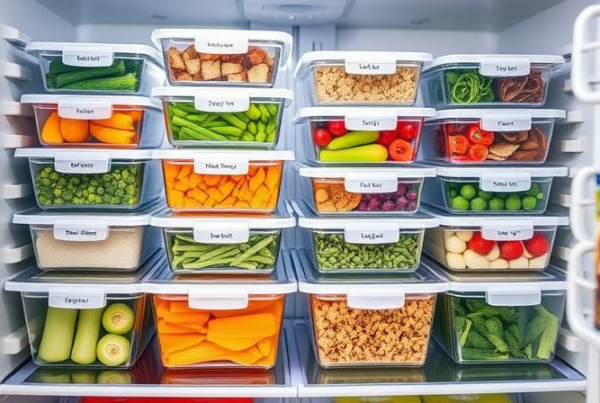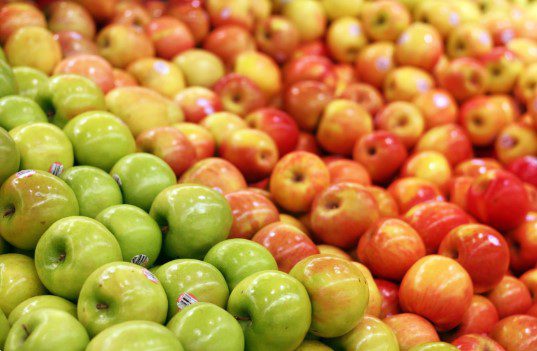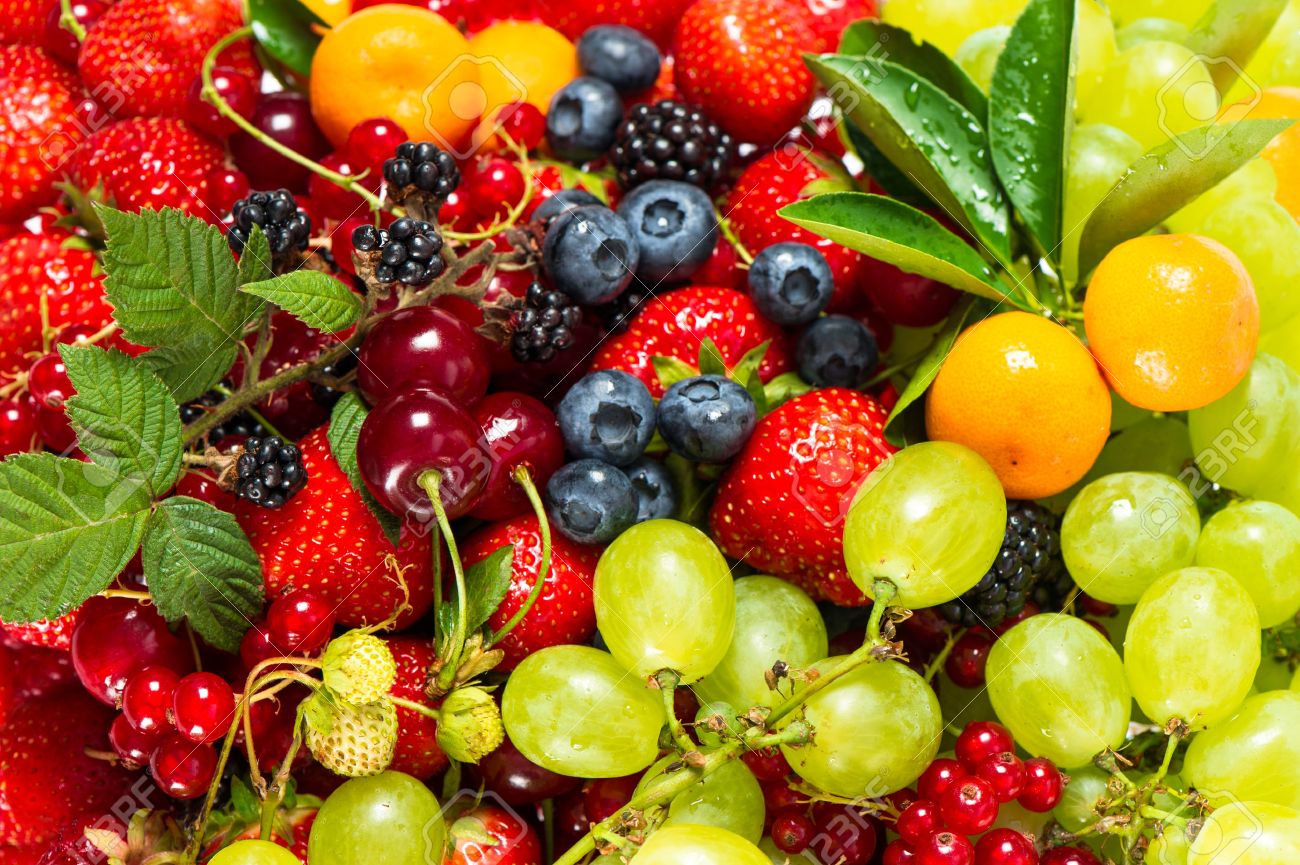How to Store Fruits and Vegetables Properly?

Have you ever opened your refrigerator to discover wilted greens or overripe fruits, you’re not alone. The struggle to keep produce fresh can be a challenging one. The journey from farm or market to your kitchen can be a perilous one for fresh produce. But fear not, because with a bit of knowledge and a few simple tricks, you can become a master in the art of fruit and vegetable preservation.
In this comprehensive guide, we’re peeling back the layers to reveal the secrets of how to store fruits and vegetables to maintain their flavor, texture, and nutritional value for as long as possible. Whether you’re an enthusiastic home cook, a health-conscious eater, or someone who simply wants to make the most of their grocery budget, this article is your passport to produce paradise.
Read More: The 5 Best Kitchen Knife Sets Under $100 Reviewed
General Tips for Storing Fruits and Vegetables
Ensuring cleanliness is the first step in prolonging the freshness and safety of your fruits and vegetables. Here’s how to maintain a hygienic environment for your produce:
Wash Your Hands: Always start by washing your hands thoroughly with soap and water before handling any fruits or vegetables. This simple step can prevent the transfer of dirt, bacteria, and contaminants to your fresh produce.
Clean Countertops and Cutting Boards: Clean and sanitize your kitchen countertops and cutting boards regularly. Cross-contamination can occur if you use the same surfaces for raw meat and fresh produce. Disinfect these areas before and after food preparation.
Storage Containers: Ensure that the containers and storage bags you use for your produce are clean and free from any residue. This helps prevent the growth of harmful bacteria and mold.
Drying Produce: After washing fruits and vegetables, gently pat them dry with a clean paper towel or cloth. Excess moisture can encourage the growth of mold and bacteria during storage.
Tip for Storing Fruits
1. Apples:

- Storage: Apples should be stored in the refrigerator crisper drawer, preferably in a perforated plastic bag to maintain humidity.
- Separation: Keep apples away from vegetables and other fruits. Apples release ethylene gas, which can accelerate the ripening of nearby vegetables.
2. Bananas:

- Storage: Bananas should be kept at room temperature until they ripen. Avoid placing them in the refrigerator before they are ripe.
- Ripening Control: If you want to slow down the ripening process, store bananas away from other fruits and vegetables. You can also use a banana hanger to suspend them, as this reduces contact with other surfaces and slows ripening.
3. Citrus Fruits (Oranges, Lemons, Limes):
![]()
- Storage: Citrus fruits can be stored at room temperature or in the refrigerator.
- Room Temperature: If you plan to consume them within a few days, keeping them on your countertop in a fruit bowl is fine.
- Refrigeration: For longer-term storage, place them in the crisper drawer of your refrigerator to maintain their freshness.
4. Berries (Strawberries, Blueberries, etc.):

- Storage: Refrigerate berries in a breathable container, such as a vented plastic or paper bag. This allows for proper airflow while preventing excess moisture buildup.
- Maintenance: Regularly inspect your berry container and remove any moldy or spoiled berries. Removing these can prevent them from affecting the others and extend the shelf life of the rest.
5. Grapes:

- Storage: Grapes should be refrigerated, typically in a perforated plastic bag to maintain humidity and airflow.
- Stem Removal: Before storing, consider removing grapes from their stem. This improves airflow and reduces the chances of moisture accumulation, which can lead to mold.
6. Melons (Watermelon, Cantaloupe, Honeydew):

- Storage for Whole Melons: Keep uncut melons at room temperature until you’re ready to use them.
- Refrigeration After Cutting: Once you’ve cut a melon, store the remaining portions in an airtight container in the refrigerator. The cold temperature helps preserve the freshness and prevents spoilage.
Tip for Storing Vegetables
1. Leafy Greens (Lettuce, Spinach, Kale, etc.):

- Storage: Rinse leafy greens thoroughly and gently pat them dry with paper towels.
- Breathable Storage: Place them in a breathable bag or a container lined with a paper towel to absorb excess moisture. Seal the container but leave it slightly ajar to maintain proper airflow. This method helps prevent wilting and maintains crispness.
2. Root Vegetables (Carrots, Potatoes, Beets, etc.):

- Storage: Store root vegetables like carrots, potatoes, and beets in a cool, dark, and dry place. A cool pantry or cellar is ideal.
- Greens Removal: Remove any green tops or stems from root vegetables before storage. These greens can draw moisture away from the roots and lead to wilting or rot.
3. Tomatoes:

- Storage: Tomatoes are best stored at room temperature, out of direct sunlight.
- Avoid Refrigeration: Avoid refrigerating tomatoes as it can affect their flavor and texture. Instead, keep them on your kitchen counter. If they ripen too quickly, consider placing them in a slightly cooler area.
4. Peppers (Bell Peppers, Chili Peppers, etc.):

- Storage: Refrigerate peppers in a plastic bag or an airtight container.
- Optional: You can also wrap them in a paper towel to absorb any excess moisture, which can help prevent mold.
5. Onions and Garlic:

- Storage: Store onions and garlic in a cool, dry place with good air circulation. A pantry or a mesh bag works well.
- Potato Separation: Keep them away from potatoes to prevent both from sprouting. Potatoes release moisture and gases that can cause onions and garlic to sprout.
6. Avocados:

- Storage for Ripening: Avocados should be stored at room temperature until they ripen. You can speed up ripening by placing them in a paper bag with a banana or apple.
- Refrigeration After Ripening: Once ripe, move avocados to the refrigerator to extend their freshness. Refrigeration slows down the ripening process.
7. Broccoli and Cauliflower:

- Storage: Refrigerate broccoli and cauliflower in a plastic bag or an airtight container. You can also wrap them in a damp paper towel to maintain moisture.
8. Cucumbers:

- Storage: Keep cucumbers in the crisper drawer of your refrigerator.
- Ethylene Gas: Store them away from fruits that produce ethylene gas, such as apples and bananas, to prevent premature ripening and bitterness.
9. Mushrooms:

- Storage: Keep mushrooms in their original packaging or a paper bag. This allows for proper moisture control and prevents moisture buildup.
- Avoid Airtight Containers: Avoid storing mushrooms in airtight containers, as this can lead to moisture retention and spoilage.
10. Herbs:

- Trim and Water: Trim the stems of herbs and place them in a glass of water, similar to a fresh bouquet of flowers. Cover the leaves with a plastic bag.
- Refrigeration: Store the herbs in the refrigerator with the plastic bag covering their leaves. This method can significantly extend their freshness.
Frequently Asked Questions (FAQs)
Q: What is the best way to store most fruits and vegetables?
A: The best way to store most fruits and vegetables is to keep them in a cool, dry place away from direct sunlight. Many fruits and vegetables can be stored at room temperature, while some may benefit from refrigeration.
Q: How would you store fruits and vegetables?
A: When storing fruits and vegetables, it’s important to consider their specific storage requirements. Generally, you can store them in a cool, well-ventilated area. Some fruits and vegetables, like apples and potatoes, can be stored in a cool pantry or cellar. Others, such as leafy greens and berries, may require refrigeration to maintain freshness.
Q: What is the best way to store fruits and vegetables in the fridge?
A: To store fruits and vegetables in the fridge, it’s best to keep them in separate compartments or drawers. Fruits like apples and berries can be stored in the crisper drawer, while vegetables like carrots and broccoli can be stored in a separate drawer. Make sure to remove any damaged or spoiled pieces to prevent them from affecting the rest.
Q: What is the best way to store fruit?
A: The best way to store fruit varies depending on the type. Citrus fruits, such as oranges and lemons, can be stored at room temperature or in the fridge. Berries should be refrigerated and consumed within a few days. Apples and pears can be stored in a cool pantry or fridge. It’s important to check individual fruit requirements to ensure optimal storage conditions.
Q: What is the best way to store vegetables?
A: Most vegetables can be stored in a cool, dry place. However, leafy greens like lettuce and spinach should be refrigerated in a plastic bag or container to maintain freshness. Root vegetables like carrots and potatoes should be stored in a cool, dark place to prevent sprouting or spoilage.
Q: What fruit should not be refrigerated?
A: Some fruits are best kept at room temperature and should not be refrigerated. These include bananas, avocados, melons (until they are cut), and citrus fruits like lemons and oranges. Refrigerating these fruits can affect their texture and taste.
Q: What are the four ways to preserve fruit and vegetables?
A: The four common ways to preserve fruits and vegetables are canning, freezing, drying, and pickling. Canning involves sealing fruits or vegetables in jars with brine or syrup. Freezing involves packaging fruits or vegetables in airtight containers and freezing them. Drying involves removing moisture from fruits or vegetables to extend their shelf life. Pickling involves preserving fruits or vegetables by immersing them in a solution of vinegar, water, and spices. Each method offers different preservation benefits and is suitable for various types of produce.
Conclusion
Properly storing fruits and vegetables is essential to maintain their freshness, flavor, and nutritional value. By following the appropriate storage methods, you can extend their shelf life and minimize waste. Remember to consider the specific storage requirements of each fruit and vegetable, such as whether they should be stored at room temperature or in the refrigerator. Keeping fruits and vegetables in a cool, dry place away from direct sunlight is generally recommended. Additionally, organizing them in separate compartments or drawers in the fridge can help maintain optimal conditions. By adopting these storage practices, you can enjoy the natural goodness of fruits and vegetables for longer periods, ensuring that your healthy eating habits continue to flourish.



